This post may contain affiliate links. Please read our disclosure policy.
Welcome to my Top 12 Chinese pantry staples with essential sauces, spices, and seasonings you can stock up in your pantry!
Building an authentic Chinese pantry can seem intimidating, but it only takes these 12 staple ingredients to start making 90 to 95% of my recipes on the site!
Please note that while this article covers the essential ingredients of a typical Chinese pantry, NOT all the items mentioned below are gluten-free. However, I have included options for gluten-free cooks if substitutions or alternatives are available. In many scenarios, I also have homemade versions that are soy and gluten-free.
You’ll learn – A brief introduction of each ingredient, how it’s commonly used in Chinese home cooking, recipes you can apply, and links to store purchases.
Think of the lists as your Chinese pantry starter kit, let’s start cooking delicious Chinese food and Taiwanese dishes at home!

Table of Contents
- Essential Chinese pantry staples
- 1. Soy sauce (light/regular and dark)
- 2. Sesame oil (toasted)
- 3. Rice vinegar
- 4. Chinkiang/Black vinegar
- 5. Neutral-flavored oil
- 6. Starch (potato, cornstarch, tapioca)
- 7. White pepper
- 8. Rice
- 9. Rice noodles
- Chinese pantry staples – aromatics
- 5 Good to have sauce and paste
- 1. Shaoxing wine (or Taiwanese michu)
- 2. Oyster sauce
- 3. Hoisin sauce
- 4. Chili oil/crisp
- 5. Chinese sesame paste
- 6 Good to have dry spices
- 1. Dried chilies
- 2. Dried shiitakes
- 3. Five spice powder
- 4. Sichuan peppercorns
- 5. Chicken/ Mushroom Bouillon
- 6. Star anise
- Top 12 Chinese pantry staples and shopping list
Essential Chinese pantry staples
1. Soy sauce (light/regular and dark)
Soy sauce is the undisputed king of Chinese pantry essentials. Made from fermented soybeans and wheat, salty soy sauce adds rich umami flavor to stirred fries, noodles, soups, and braised dishes. When a recipe calls for “soy sauce” without specifying, light soy is intended.

- Light soy sauce is the versatile all-purpose seasoning used in everything from dumpling dipping sauce to wok-seared beef.
- Dark soy sauce is added in smaller amounts, mainly to provide enticing caramel color to sauces and braises, though it also boosts flavor. Trusted brands like Pearl River Bridge, Lee Kum Kee and Kikkoman ensure you get authentic flavor in every drop.
Tip: Look for naturally brewed soy sauce to get authentic flavor and avoid artificial additives. Check the label for a short ingredient list, avoiding products with corn syrup or a long list of chemicals. - For gluten-free light soy sauce, tamari can substitute for regular soy sauce. Lee Kum Kee also has a gluten-free version.
- Gluten-free dark soy sauce, Lee kum kee has a dark soy sauce version.

- For paleo (soy-free) diets, Big tree farm coconut aminos is my go-to. It has a similar flavor to Southeast Asian sweet soy sauces, called kecap manis that are thicker and naturally sweeter. Japanese San-J and South Korean Sempio also have soy-free soy sauce that tastes very similar to regular soy sauce and are made from peas.
I use them in almost every dish on the blog and you can recreate great-tasting Chinese/Asian dishes at home even if you are sensitive to gluten or soy. Give my string bean chicken panda express, black pepper chicken, and honey sesame chicken a try!
2. Sesame oil (toasted)
Toasted sesame oil is made from pressing toasted sesame seeds, giving it a deep amber color and rich, nutty aroma. It’s naturally gluten-free. It adds lovely fragrance and nuttiness to marinades, sauces, noodles, and stir-fries such as Asian cucumber salad, hotpot sauces, Kalbi and Kalbi marinade. However, toasted sesame oil loses its flavor at high heat, so it’s added at the end of cooking or used in cold dishes.
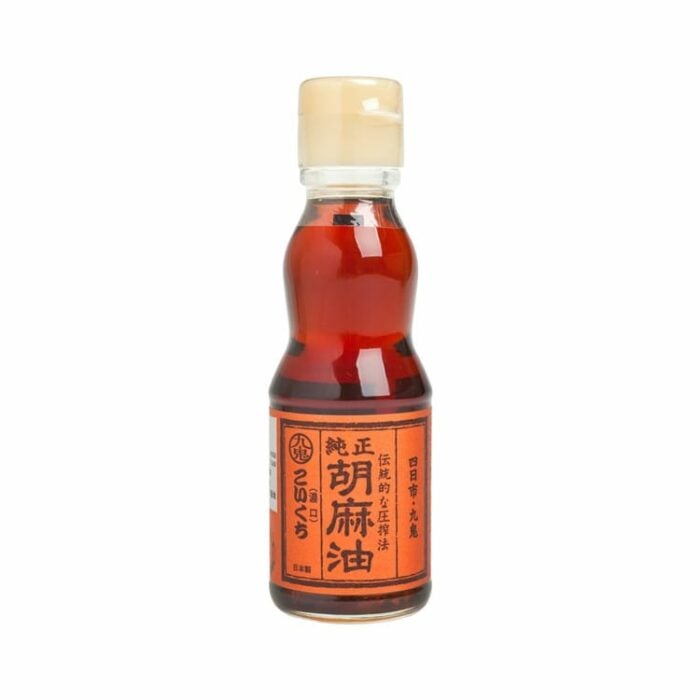
When purchasing, check for “toasted” on the label, as regular sesame oil won’t provide the same flavor. Kadoya and Lee Kum Kee are two popular choices. My personal favorite is Japanese Kuki toasted sesame oil. Add just a drizzle to finish a dish.
3. Rice vinegar
Rice vinegar adds gentle acidity and subtle sweetness to various Chinese dishes. Made from fermented rice, naturally gluten-free, it has a light yellow color and mild, fresh taste compared to the robust black vinegar.
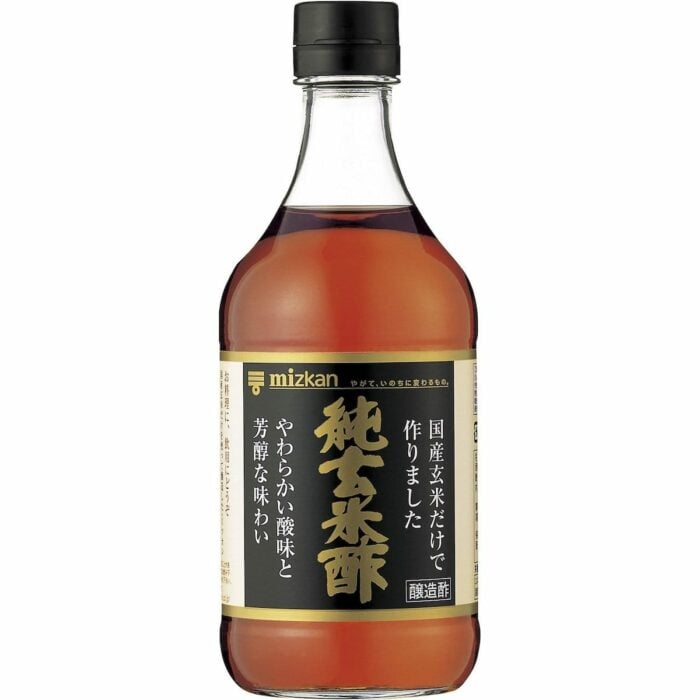
Rice vinegar brightens up stir-fries, salad dressings, marinades, and dipping sauces without overpowering them. It’s also used for making sushi rice. Japanese brand Mizkan rice vinegar is my go-to. It has a mild sweet and fruity acidic flavor. Try my Ginger chicken stir-fry, bang bang sauce, and 5 hotpot sauces.
4. Chinkiang/Black vinegar
Chinese black vinegar, also known as Chinkiang or Zhenjiang vinegar, is made from glutinous rice and has an inky black color. It possesses a rich, complex flavor with malty, woody notes and a gentle sweetness. Black vinegar is sometimes called ‘fragrant vinegar’ in Chinese cooking.

The mellow acidity and fruitiness of black vinegar make it a beloved ingredient in dipping sauces, braises, soups and salad dressings. It adds a tantalizing fermented quality not found in lighter rice vinegar. Gold Plum Chinkiang vinegar is a popular go-to brand.
Chiinkiang vinegar is not gluten-free. While there are no perfect substitutes, aged balsamic vinegar will provide a similar sweet, tangy, and slightly acidic taste. You can see how I adopted the ingredients in my Chinese eggplant with garlic sauce, Spicy cucumber salad, and Spicy peanut noodles.
5. Neutral-flavored oil
I prefer using a neutral-flavored and high smoke point cooking oil to make Chinese stir-fry dishes. Avocado oil is my go-to. They are great for bok choy stir-fry, Chinese pepper steak, and Chinese broccoli stir-fry.

If you are looking for an authentic flavor, look for pure peanut oil rather than highly refined blends to get the most fragrance and taste. Asian brands like Lion & Globe and Arowana are popular or La Tourangelle also offers premium quality.
6. Starch (potato, cornstarch, tapioca)
Starch, especially cornstarch, is an essential ingredient that serves multiple purposes in Chinese cooking. It thickens sauces and soups when mixed with water to make a slurry. You can see how I use it Keto egg drop soup and chicken and corn soup.
Corn starch (or potato starch) batters give foods like panda express orange chicken their crispy texture when fried. It also tenderizes meat when used in beef stir fry marinade and chicken stir fry marinade.

Look for pure corn starch or potato starch, not flour, for the proper results. Always mix a starch with cold water in 1 to 2 ratio to make slurry separately before adding it to a hot pan. My favorite brand is Bob’s red mill.
7. White pepper
White pepper packs more potent heat and aroma compared to standard black pepper. The sharp, spicy kick enhances stir-fries, noodles, and soups without overpowering them. Simply organic is my go-to.

White pepper is preferred over black pepper in most Chinese and Taiwanese recipes for its cleaner peppery punch, my Taiwanese popcorn chicken and Chicken hot sour soup are two examples. Look for finely ground white pepper for the right texture and flavor release. Just a pinch provides plenty of spice.
8. Rice
Rice is the main star of Chinese meals. The two most popular types are short grain (also known as sushi rice) and long grain Jasmine white rice. Short-grain rice is sticky, ideal for sushi-like my crispy rice sushi.
Long grain Jasmine white rice is less sticky and is great for fried rice. Long grain rice is also great for making rice in an air fryer or air fryer fried rice. My mom always said a meal is not complete without rice! Tamaki gold is my favorite.
A bowl of fluffy perfectly cooked rice goes with practically all dishes on my blog. Start with Black pepper beef and vegetarian bibimbap!
9. Rice noodles
Rice noodles, known as “米粉” (mǐ fěn) in Chinese, are a versatile staple originating from China. Made primarily from rice flour and water, they are naturally gluten-free, making them a preferred choice for those with gluten sensitivities.
You can find them in soupy dishes, fried up with meat and veggies like Garlic chili noodles, or even cold Spicy peanut noodles. They’re great because they soak up tasty sauces really well. My favorite brand is Lotus foods.
Chinese pantry staples – aromatics
10. Ginger
Fresh ginger is a must-have ingredient that adds a bright, zesty pop of flavor to Chinese cooking. Its spicy heat gently warms marinades, sauces, stir-fries, and braises.
Ginger’s magical flavor pairs especially well with chicken, beef, and seafood. It also helps tenderize meat. Look for plump, smooth ginger root and store extra in the fridge wrapped with a saran wrap or in the freezer if needed.
Recipes you can try are Chinese steamed cod, Ginger salad dressing, and Soy ginger glazed salmon fillet.
11. Garlic
Like its aromatic friend ginger, garlic is fundamental for delivering a big flavor in Chinese cuisine. Pungent garlic amplifies the taste of marinades, sauces, stir-fries, and braises with its zing.
Combine garlic with ginger and scallions to get the classic Chinese aromatic trio. Fresh garlic brings an addictive flavor and aroma that make your homemade Chinese dishes irresistible.
Start with these authentic Chinese dishes that are full of garlicky deliciousness – Chinese garlic green beans, Garlic chili noodles, and Garlic chili sauce.
12. Scallions
Fresh scallions, also known as green onions or spring onions, lend an aromatic flavor and visual appeal to many Chinese recipes. Their bright green tops add gentle oniony sweetness to soups, noodles, stir-fries, and dumplings.
The white parts of scallions are usually used for cooking and stir-frying whereas the green parts are used for garnish. Always use fresh scallions within a few days for optimal flavor. Give my Keto scallion pancakes a try or Chinese ginger scallion cod.
5 Good to have sauce and paste
1. Shaoxing wine (or Taiwanese michu)
Shaoxing wine or Taiwanese michu adds an unmistakable depth and Chinese restaurant flavor to home cooking. This type of Chinese rice wine made from fermented glutinous rice introduces a subtle sweetness and umami taste.
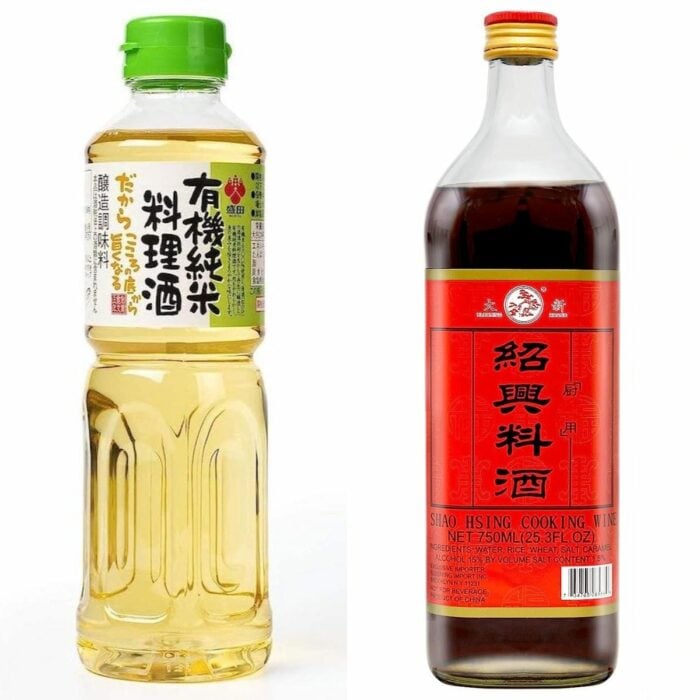
Use Shaoxing wine in marinades like my Beef stir-fry marinade and Velvet chicken and deglaze pans when stir-frying. It provides authentic flavor to sauces and braises as well. Because of the production process, Shaoxing wine is not gluten-free.
For gluten-free cooks, Dry sherry makes a suitable substitute. For a milder and sweeter flavor, try Japanese mirin (rice wine). Not all Mirin is gluten-free but Ohsawa Genuine Mirin and Morita Organic Mirin are gluten-free. Always read the labels first.
Unfortunately, there’s no perfect substitution for non-alcoholic Shaoxing wine flavor. If the recipe calls for using the wine for deglaze, try adding a splash of chicken stock or vegetable stock.


2. Oyster sauce
Oyster sauce presents a concentrated hit of umami goodness in Chinese cooking, living up to its name. Made from oyster extracts, sugar, soy sauce, and brine, its flavor is balanced, savory, sweet and salty. The thick, glossy brown sauce enhances stir-fries, noodles, and braises, especially with beef and vegetables.
Oyster sauce adds richness without an overpowering fishy taste. Premium Lee Kum Kee brand offers the deepest oyster essence flavor. A little oyster sauce goes a long way.

There are a few gluten-free versions available – Megachef oyster sauce, kikkoman green label, or Lee kum kee green label.
➡️ Or give my homemade Vegan and vegetarian oyster sauce or Taiwanese thick soy sauce a try. It’s completely gluten-free, low carb, and with no added sugar that’s made from dried shiitake.
3. Hoisin sauce
Sweet and salty hoisin sauce packs a serious umami punch. Made from fermented soybeans (bean pastes), garlic, vinegar, sugar, and spices, its flavor resembles a Chinese barbecue sauce.
Hoisin sauce excels when used in marinades, stir-fries, noodles, and for Peking duck. It also makes a finger-licking dipping sauce. When you crave deep, savory flavors with a hint of sweetness, reach for hoisin sauce in your Chinese cooking.
➡️ Give my homemade Gluten free hoisin sauce a try and use the sauce for Moo shu chicken!
4. Chili oil/crisp
Chili crisp and chili oil are popular condiments that add addictive spicy punch and flavor. Chili oil is infused with aromatics, while chili crisp also contains crunchy bits. Drizzle them over everything from chili garlic noodles to rice paper dumplings, or add to dipping sauces. They also make excellent cooking oils.
Chili crisp offers more texture and chili oil more straightforward spicy flavor. Add these power-packed condiments to invigorate your homemade Chinese dishes. ➡️ Give my homemade Garlic chili sauce a try.
For store-bought (not gluten-free), my favorites are Fly By Jing and Momofuku.
5. Chinese sesame paste
Chinese sesame paste is made from darkly roasted sesame seeds, giving it a darker color and a nuttier, less bitter flavor.
You can find Chinese sesame paste at local Chinese grocery stores or online. My favorite is from the Mala market.
6 Good to have dry spices
1. Dried chilies
Dried chilies like de arbol and pequins provide a smoky spicy flavor and heat to Chinese dishes. They infuse oil with enticing chili fragrance in stir-fries and braises. With many varieties available, you can customize the amount of spice. My go-to is Mala market for all things Chinese dry chili peppers.
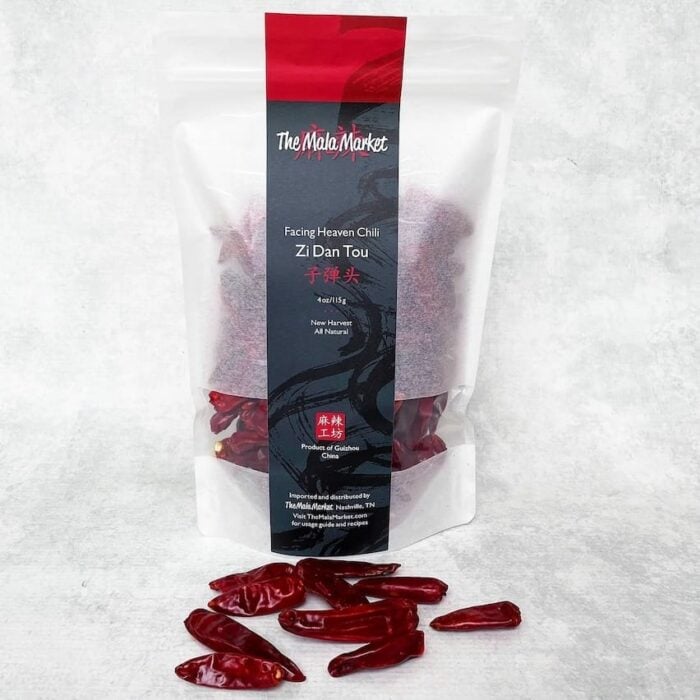
I often use them in whole or cut them up (with seeds shaken out) in stir fries such as Chinese eggplant with garlic sauce and Kung pao shrimp to add color and a hint of smokey and spicy flavor to enhance the dish.
2. Dried shiitakes
Intensely umami-dried shiitake mushrooms boost savory flavor when rehydrated and added to recipes. Prized for their rich, woodsy taste, they elevate sauces, soups, and braises. High-quality dried shiitakes can get expensive, but a little goes a long way.

Always fully rehydrate dried shiitakes before using them by soaking them at room temperature water overnight. Save the mushroom water to make Bok choy soup or Vegan hot pot. Add shiitake to Asian chicken noodle soup, Baby bok choy stir-fry with shiitake, Instant pot chicken cabbage soup, and Chinese chicken soup.
I like to purchase them at local Chinese grocery stores. This one online looks pretty good.
3. Five spice powder
This blend of five warming Chinese spices imparts complex flavor to recipes and is a must-have seasoning for Taiwanese recipes. Typical ingredients include star anise, fennel, cinnamon, cloves and Sichuan pepper. I like Frontier co-op brand.

Five spice powder excels when rubbed on meats before cooking and added to braises and marinades or for salt and pepper seasoning. A pinch infuses dishes with its licorice, peppery and sweet warmth. Five spice powder is a handy shortcut for instilling authentic Chinese flavors fast.
Recipes you can try are Taiwanese popcorn chicken, Taiwanese fried chicken cutlets, Mongolian chicken, and Air fryer salt and pepper tofu.
4. Sichuan peppercorns
Famous for their tongue-numbing effect, toasty Sichuan peppercorns are essential for authentic Sichuan cuisine. They provide a unique lemony, woody aroma and what’s described as a “mouth-buzzing” sensation.

Use Sichuan peppercorns in classics like Chinese steamed eggplant salad, Black pepper chicken, Black pepper beef, Kung pao chicken, mapo tofu, and dan dan noodles. My go-to is Mala market.
5. Chicken/ Mushroom Bouillon
Asian mushroom seasoning boosts savory umami flavor. They quickly infuse dishes like shirataki rice, Sauteed Taiwanese cabbage, Creamed Chinese napa cabbage, Snow pea leaves stir fry, and Bok choy soup with a tasty meaty depth. A little adds a savory boost without overpowering the other ingredients.

My favorite brand is Takii mushroom seasoning. For chicken bouillon, Lee kum kee seems to be popular. Or you can give my homemade chicken bouillon a try.
6. Star anise
With an alluring sweet, licorice-like aroma, star anise is regularly used in Chinese braises, soups, and teas. Its warming flavor pairs especially well with beef and pork dishes like Taiwanese beef noodle soup, Brisket pho, and Instant pot Taiwanese beef stew.

Whole star anise pods look like eight-pointed stars and add wonderful flavor when simmered in liquids. Remove them before eating. Allow star anise to lend its signature flavor to your homemade Chinese dishes. For high-quality star anise, check out Mala market online.

Top 12 Chinese pantry staples and shopping list
Ingredients
- 1 bottle Soy sauce, light/regular
- 1 bottle Dark soy sauce
- 1 bottle Coconut aminos, Gluten and soy-free option
- 1 bottle San-J no soy soy sauce, Gluten and soy-free option (made from peas)
- 1 bottle Sempio no soy soy sauce, Gluten and soy-free option (made from peas)
- 1 bottle Toasted sesame oil
- 1 bottle Rice vinegar
- 1 bottle Oyster sauce
- 1 bottle Chinkiang/Black vinegar
- 1 bottle Aged balsamic vinegar, Gluten-free alternative
- 1 bottle Gluten-free mirin
- 1 bottle Gluten-free sake
- 1 bottle Chinese sesame paste
- 1 bottle Avocado oil, or any neutral flavored oil
- 1 bag Potato starch, or tapioca
- 1 jar White pepper, ground
- 1 bag Rice, prefer short grain white rice
- 1 packet Rice noodles
Instructions
- In this list you will find 12 essential Chinese pantry staples that are good to have at home. Most of the items are naturally gluten-free with the exceptions of soy sauce and Chinkiang/Black vinegar.
- For gluten-free and/or soy-free users, I provided alternative options. For soy-sauce, there are many choices – gluten-free soy sauce, soy sauce made from fermented peas, or coconut aminos.
- While there’s not perfect alternative for Chinese black vinegar, use aged balsamic vinegar for an approximate taste of sweet, tangy, and acidic taste.



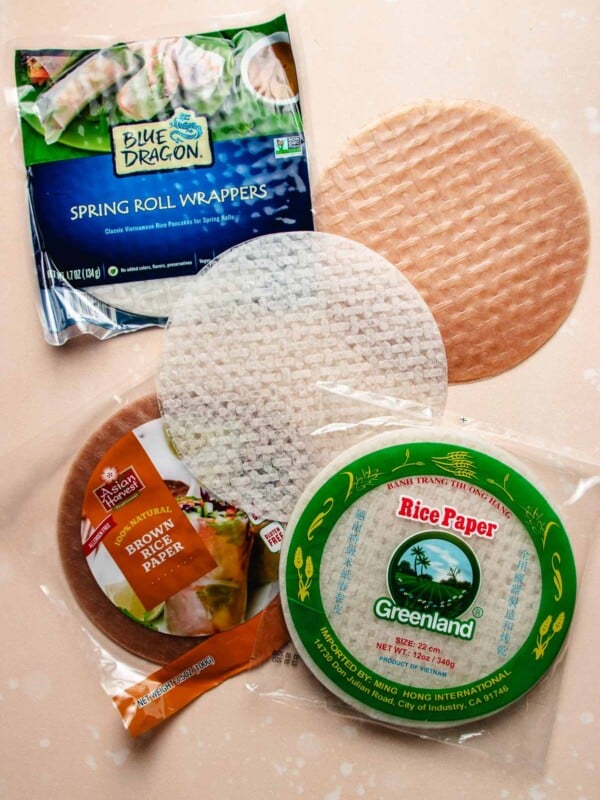









Your website printer is not working. When I hit PRINT nothing happens except it wants to print 29 pages at once. I tried two browsers and the result was the same.
We checked and it prints only one page for the pantry staples.
This is so helpful, thank you! It’s so nice to have all of this info in one place. Thanks for the links, as well!
You are very welcome. Thanks so much!
Absolutely loved this article. I dabble with Chinese recipes but to have the whole list of essential ingredients in one place is simply fabulous!!!
Thank you so much, Judy. Much appreciate your kind words. 🙂